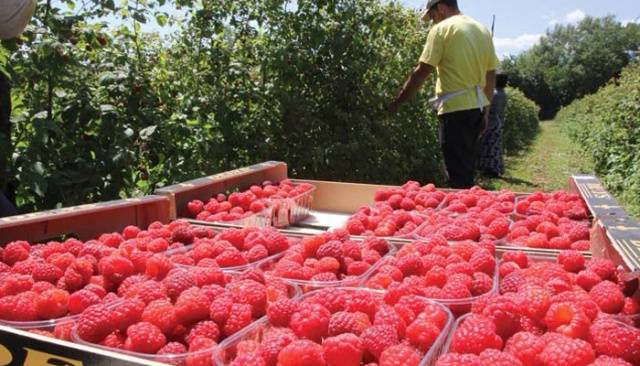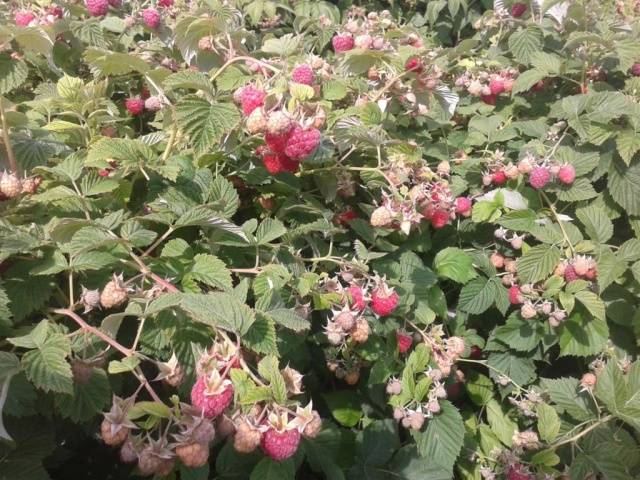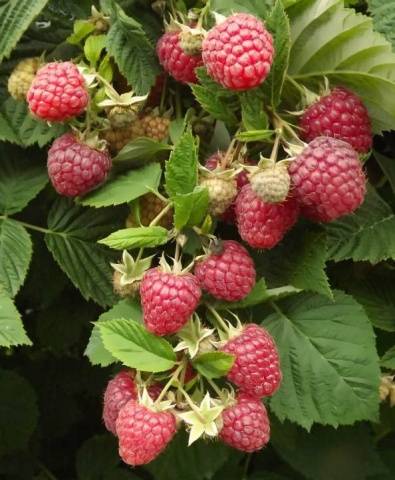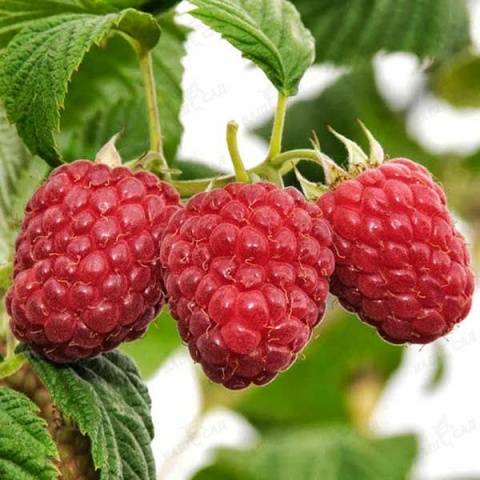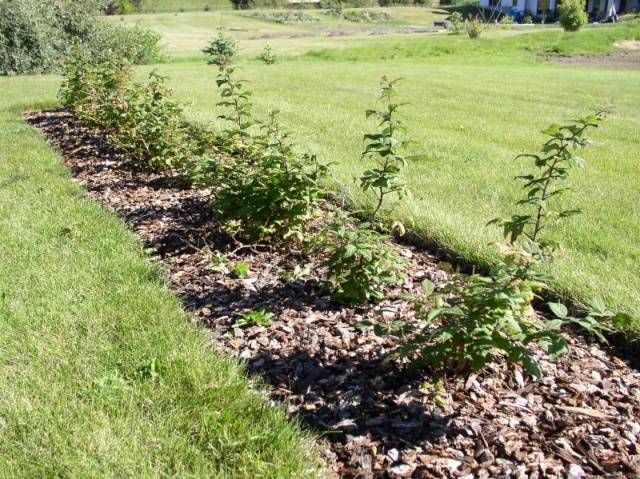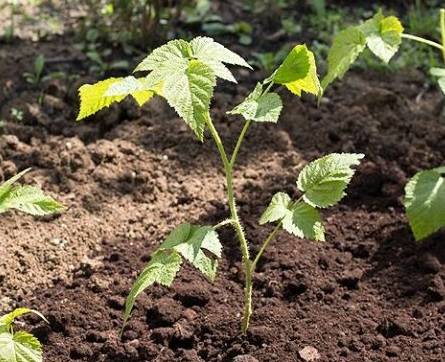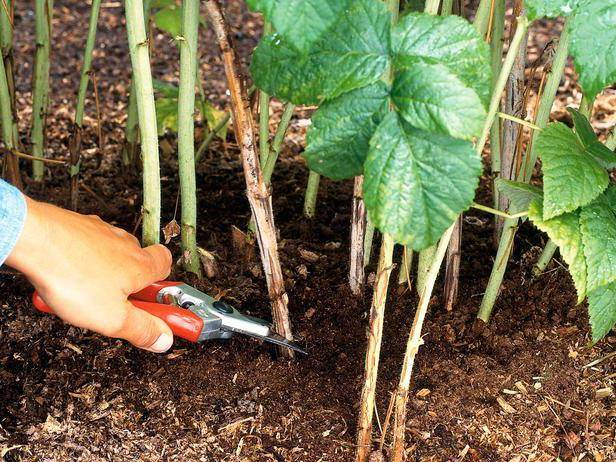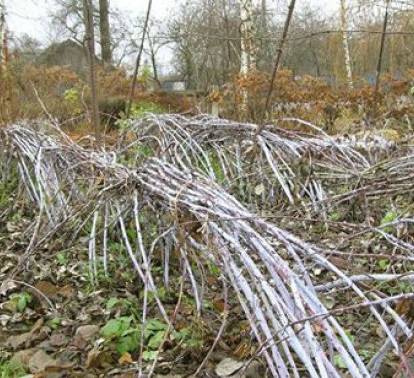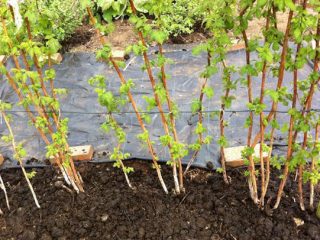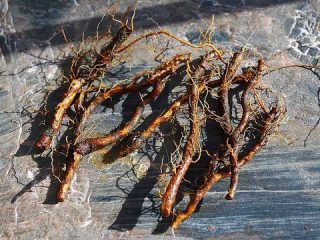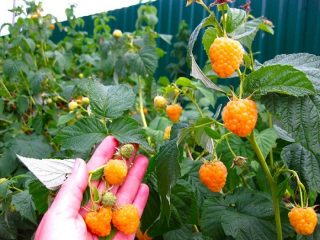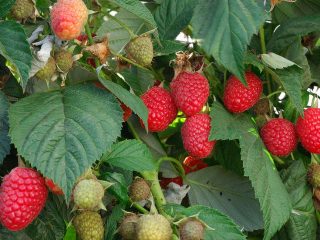Content
Scottish breeder Nikki Jennings created a whole series of raspberry varieties under the general name Glen. All the plants from a distance look like a raspberry tree covered with large berries.
Raspberry Glein Fine is a real find, because the plant can be grown not only in summer cottages, but also on a large scale in open and protected ground. The Fine raspberry variety has already distinguished itself: since 2009, its berries have been recognized as the most delicious, and in 2010 it won a prize-winning place in terms of yield.
Description of the variety
To understand what the new Glen Fine raspberry variety is, you need to get acquainted with the description of the bush and berries. This will help you understand whether this plant is yours or not.
Features of the bush
Raspberry Glen Fine variety has a strong root system, and the adventitious roots are shallow. In loose soil, they can penetrate to a depth of 40-60 cm, in denser soils, only 10-15 cm.
It is on the lateral roots, located horizontally, that growth buds are formed, from which new raspberry shoots grow. With a large number of shoots, some must be destroyed during the summer, leaving only replacement ones.
Raspberries of the Glen Fyne variety are tall, when favorable conditions are created and agrotechnical standards are met, it reaches 2.5 meters. Each replacement shoot lives for 2 years. In the first year, by autumn, fruit buds are formed on it, and the next year after wintering, raspberries bear fruit on replacement shoots. Moreover, the largest number of berries, according to gardeners' reviews and the presented photos, are collected on the middle part of the stem.
Flowers and fruits
Glen Fine raspberries start blooming in June. The flowers are bisexual, so the berry set is excellent. Fruits are red, elongated. The mass of one berry variety is 5-6 grams. There are also larger specimens up to 10 grams. Fruiting of Glen Fyne raspberries is long, so the harvest is harvested at several times.
Ripe berries keep well on the bush, do not lose their taste for about five days. This characteristic of the variety is especially to the liking of summer residents who do not have the opportunity to visit the site every day.
In addition to high yields, up to 30 kg per square meter, Glen Fine raspberries are distinguished by their sweet taste and exquisite aroma.
Characteristic
Already by the description of the Glen Fine raspberry variety, one can judge the uniqueness of the plant created by Scottish breeders.
The plant still has very attractive characteristics:
- Variety of medium early ripening, without thorns. Raspberry Glen Fine surpasses the variety at the beginning of ripening Emple from the same series for three days.
- Can be grown both in regular beds and in a greenhouse.
- High-yielding variety, recommended for large-scale cultivation.
- Raspberry Glen Fine is frost-resistant, not afraid of drought.
- Plants are tall, up to 2-2.5 meters, thanks to powerful and strong shoots, you can not tie them up.
- Raspberry shoots are formed enough for reproduction of the Fine variety, all that is superfluous must be removed.
- In the southern regions, the manifestation of remontant is possible, therefore, at the end of August, flowers and ovaries appear on the tops of fruiting shoots.
- Glen Fine raspberries are resistant to many viral diseases of the culture.
If we talk about the disadvantages of the variety, then this is sensitivity to certain diseases:
- root rot;
- phytophthora;
- powdery mildew.
Raspberries from the Glen series - Ample and Fine varieties:
Breeding features
Judging by the reviews, the Glen Fine raspberry variety is propagated mainly by root suckers.It is best to transplant young shoots to a new place where representatives of the culture have not grown before, as well as potatoes, tomatoes, eggplants. The soil for raspberries is well flavored with organic matter, dug up, removing the roots weeds.
You can propagate Glen Fine raspberries in the spring, summer or fall, as you wish. In order for the plants transplanted to a new place to experience less stress, it is advisable to time the work on cloudy, and even better rainy weather.
When landing, you need to follow these requirements:
- Choose a one-year-old shoot from a healthy bush of the Glen Fine variety a little as thick as a pencil.
- The upper part of the shoot is cut by 2/3 to prevent fruiting. 3-4 buds are left on a 10 cm long seedling.
- The Glen Fyne variety can be planted in a trench or nesting method. For trench planting, raspberry seedlings are placed in increments of up to 50 cm. You can plant 2-3 annual root shoots in the nests.
- Raspberry roots are buried 5 cm, but the root collar should be above the surface.
- The soil is trampled down, filled with water. As a rule, when planting on one shoot, half a bucket of water is needed.
In the photo below you can see how to plant raspberries correctly.
The soil around the planted Glen Fyne raspberries is mulched with fresh grass, straw, peat, sawdust, rotted manure. The harvest can be expected next summer.
How to care
Judging by the description, characteristics and reviews of gardeners, the Glen Fyne raspberry variety is unpretentious in care. It can be grown by beginners if they know the basics of agricultural technology of this culture. In principle, the work is reduced to the following procedures:
- watering;
- weeding;
- loosening;
- top dressing;
- tying up bushes;
- removal of excess growth during the growing season.
We will tell you in detail about some types of care for Glen Fine raspberries.
Watering features
After planting, the seedlings are watered only on the fifth day. Mature plants as the topsoil dries. It should be noted that the Glen Fyne raspberry is a drought-resistant plant, but it is not recommended to overdry the plantings too much. This can lead to the death of the variety's shoots.
Although it is the resistance of plants to drought that summer residents like, since a week after abundant watering, raspberries feel good. To retain moisture and simplify planting maintenance (loosen and weed weeds), it is best to mulch the soil under raspberries.
Top dressing
It is necessary to feed the plantings of Glen Fine raspberries every year. The fact is that high yields weakens the root system, which will negatively affect the fruiting of the next year.
Raspberry food is organized starting in spring and continues to be fed throughout the summer. The last time the variety is fertilized in the fall after harvest for a good wintering.
For top dressing, take mineral (potassium salt, superphosphate) or organic fertilizers. Fine raspberry bushes respond well to mullein, which is bred 1: 6, and bird droppings - 1:15. Green fertilizing from fermented grass will also not be superfluous. In addition, raspberries are fed with dry wood ash or infusion from it. The fact is that this waste from burning wood contains a huge amount of macro and microelements in its composition.
Other elements of care
Glen Fine raspberry shoots are long. If winds often blow in the region, then it is advisable to tie them to the trellis in two places at different heights.
Immediately you need to decide on the replacement shoots. Only a few pieces are left on the garden bed, the rest must be removed so that they do not pull off nutrients.
Enemies of the grade
Based on the characteristics, Glen Fyne is resistant to many raspberry diseases. But it is not always possible to get away from leaf spot, anthracnose. It is best to carry out preventive treatment with Bordeaux liquid in early spring, again after 14 days. Last spraying after picking berries.
Of the pests, great damage to the raspberry variety Glen Fine is caused by:
- root-eating nematodes;
- another enemy is the crimson weevil. It destroys not only leaves, but also flowers, ovaries and ripening berries;
- inside the shoots, a gall midge often settles - a small mosquito that leads to death of raspberry bushes.
You can try to destroy nematoda and weevil with soapy water and spraying raspberries with an ash extract. As for the gall midge, the plants are treated with Karbofos. Do not wait for pests to multiply. It is better to warn them by carrying out preventive treatments of Glen Fyne raspberry plantations in the spring, and then several more times during the growing season.
Digging the soil and introducing wood ash helps to get rid of mosquitoes.
Wintering
In winter, Glen Fine raspberries should leave healthy and well-fed. Only in this case, the plants will delight next summer with an excellent harvest of large red berries.
Measures to prepare raspberries for winter:
- Pruning of fruit-bearing shoots and first-years, on which traces of the disease are seen.
- Raspberry bushes processing and soil with Bordeaux liquid from various pathogens.
- Fertilizing raspberries with mineral or organic fertilizers. Experienced gardeners in reviews recommend feeding Glen Fine raspberries with manure or wood ash. It is quite capable of replacing potash fertilizers.
- Abundant watering immediately after feeding.
- Bending down the shoots while the temperature is above zero.
- When temperatures drop, it is necessary to organize a shelter for the winter. First, cover with non-woven material so that there are no problems in the spring. From above, you can use spruce branches, black soil or peat for shelter. The ends of the shelter are left open.
- If mice are in control of the region in winter, they spread the poison. Full cover of landings is performed when the temperature drops to 8-10 degrees.
- As soon as the snow begins to fall, it must be thrown onto the raspberry ridges.
